
 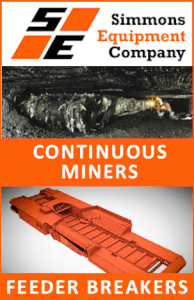


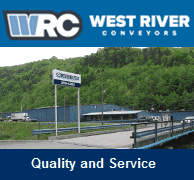






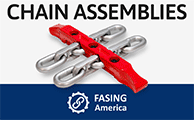
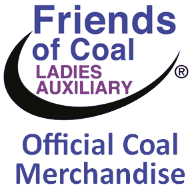
|
Signature Sponsor


October 16, 2025 - Longwall mining represents one of the most sophisticated extraction methods in the coal industry, utilising advanced mechanised systems to achieve unprecedented efficiency rates. This technology involves the complete extraction of coal from rectangular panels using a shearer that moves continuously across the coal face, supported by hydraulic roof supports that advance as mining progresses. Furthermore, modern mine planning approaches enhance these systems' effectiveness. Modern longwall systems demonstrate remarkable recovery rates, extracting 60-75% of available coal compared to traditional room-and-pillar methods that typically achieve only 40-50% recovery. According to the U.S. Energy Information Administration, these systems can produce 15,000-20,000 tons of coal daily, with longwall faces spanning 750 to 1,500 feet in width and extending up to 12,000 feet in length. The technological sophistication of contemporary longwall equipment is evident in the specifications. Modern shearers weigh between 75-120 metric tons with cutting drums rotating at 25-50 RPM, while hydraulic shield support systems provide 500-1,000 tons of roof support capacity per unit. In addition, these systems incorporate automated horizon control using sensors to maintain optimal cutting height and adjust positioning in real-time, significantly reducing human intervention requirements. Safety improvements through longwall technology have been substantial. The Mine Safety and Health Administration reports that longwall operations experience a 45% reduction in reportable injuries compared to room-and-pillar operations when controlling for production volumes. This improvement stems from reduced worker exposure to active mining faces and enhanced automation capabilities. How Does Allegheny's $1 Billion Investment Transform Regional Mining?The Allegheny Metallurgical longwall operation West Virginia investment exceeds $1 billion, representing one of the largest single mine investments in Appalachia over the past decade. This investment scale becomes significant when compared to West Virginia's total annual capital expenditures for underground coal mining operations, which averaged $450-600 million from 2019-2023. Eric Lipinski, Chief Operating Officer at Allegheny Metallurgical, emphasised the comprehensive nature of this investment: "We have built a world-class team and facility here at Allegheny Met. The operation of the longwall reflects our investment in both advanced mining technology and our workforce." The capital allocation encompasses several critical components: • Advanced longwall equipment systems typically requiring $80-120 million for complete installation This investment transforms regional mining by introducing automation technologies that reduce operational costs while improving safety protocols. Consequently, the scale of investment demonstrates long-term confidence in metallurgical coal markets and establishes new technological benchmarks for Appalachian mining operations. The industry evolution trends support such substantial investments in advanced technology. What Are the Economic Implications of 3.5 Million Tons Annual Production?The Allegheny Metallurgical longwall operation's projected 3.5 million metric tons of annual metallurgical coal production positions it among the region's most significant operations. This production volume represents approximately 7.4% of West Virginia's total underground coal production capacity, which totalled 52 million short tons in 2023.
The revenue implications are substantial given current metallurgical coal pricing. With metallurgical coal prices averaging $180-250 per short ton FOB mine during 2023-2024, the operation's annual revenue potential ranges from $700 million to $966 million at full capacity. Metallurgical coal quality requirements for steel production include specific parameters: • Volatile matter content: 15-30% The Lower Kittanning seam accessed by Allegheny's operation typically produces low-to-medium volatile metallurgical coal with favourable coking characteristics. For instance, this positioning provides advantages in global markets where seaborne metallurgical coal trade totalled approximately 340 million tonnes in 2023. How Does the Employment Structure Benefit West Virginia Workers?The Allegheny Metallurgical operation introduces an innovative 28-day rotation schedule where employees work 14 consecutive days followed by 14 days off. This scheduling approach differs significantly from traditional Appalachian mining schedules that typically operate on 5-day or 6-day weekly rotations with 8-12 hour shifts. Current employment stands at more than 400 individuals, expanding to over 500 workers at full operational capacity. This employment level represents 2.7 times the West Virginia underground mine average of 187 workers, reflecting the operation's scale and technological sophistication. Moreover, data?driven operations enable better workforce management and scheduling optimisation. The extended rotation system offers several advantages: • Enhanced work-life balance through consecutive 14-day rest periods Research by the National Institute for Occupational Safety and Health indicates that extended work rotations followed by extended rest periods can reduce cumulative fatigue when adequate daily rest is maintained during work periods. This scheduling innovation addresses industry-wide challenges of worker retention and fatigue management. With average hourly wages for West Virginia underground coal miners at $33.47 in 2024, the operation provides access to above-average compensation. Furthermore, mining represents one of the highest-paying industrial sectors in a region where employment opportunities remain vital for economic stability. What Role Does Geographic Location Play in Operational Success?The Allegheny Metallurgical longwall operation's location near Volga, West Virginia in Barbour County provides strategic advantages for metallurgical coal production and distribution. This north-central West Virginia location sits approximately 20 miles south of Morgantown, positioning the operation within an established mining region with supporting infrastructure. The geological advantages are significant. The Lower Kittanning seam represents one of the most widely mined coal seams in the Appalachian Basin, typically occurring at depths of 300-1,500 feet in northern West Virginia. This seam varies in thickness from 24 to 84 inches, with the Allegheny operation accessing areas with 75-inch height, providing optimal mining conditions for longwall extraction. Transportation infrastructure connectivity enhances operational viability: • CSX Transportation network access with connections to domestic steel mills Rail transportation economics significantly impact delivered coal costs, typically accounting for 20-35% of total delivered costs for Appalachian mines serving distant markets. The operation's strategic location minimises these transportation expenses while maximising delivery flexibility. The Lower Kittanning seam's geological characteristics as part of the Pennsylvanian Allegheny Group provide consistent coal quality parameters essential for metallurgical applications. Barbour County and surrounding areas have historically produced significant volumes of metallurgical coal due to favourable geological conditions and established mining infrastructure. What Are the Environmental and Safety Considerations?Modern longwall mining operations like Allegheny's implement comprehensive environmental and safety protocols that exceed traditional mining standards. Underground coal mining injury rates in the United States averaged 3.55 per 200,000 hours worked in 2023, with West Virginia specifically reporting 3.72 injuries per 200,000 hours. |
 
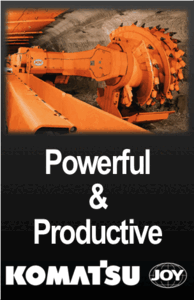

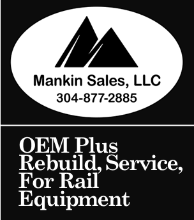



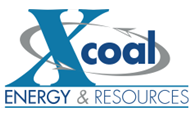

|